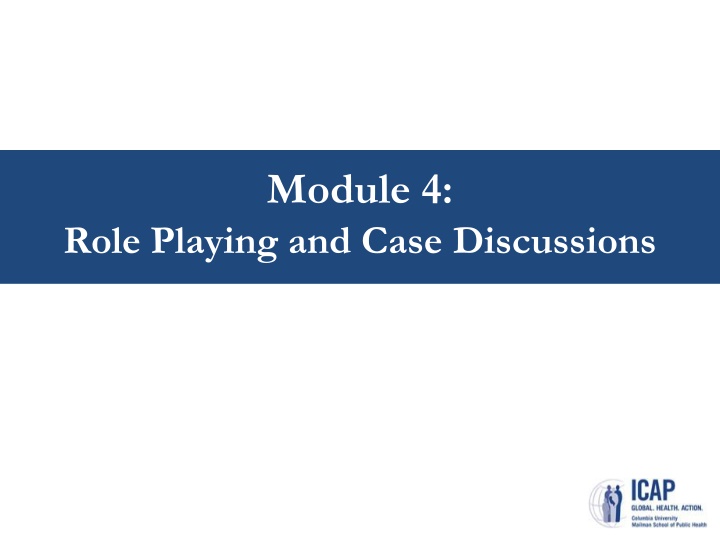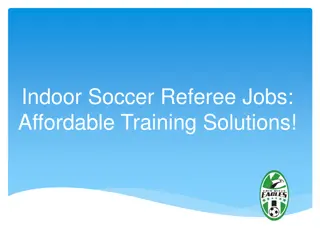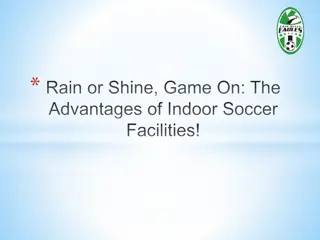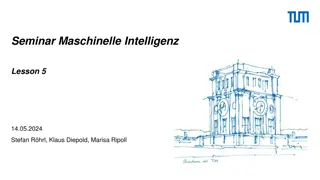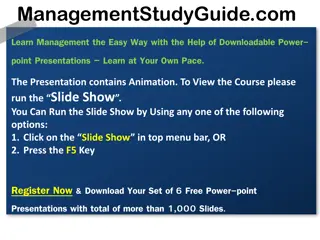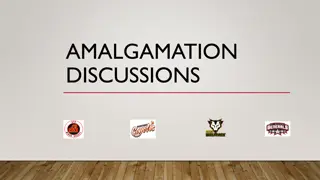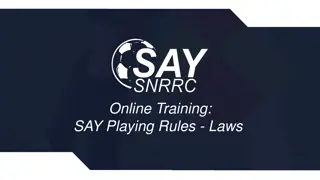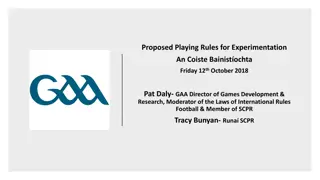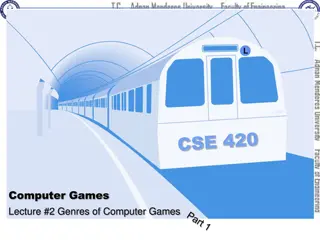Role Playing and Case Discussions
An engaging module focusing on real-life cases in HIV/AIDS treatment, encouraging interactive role-playing scenarios for healthcare professionals. Explore diagnosis acceptance, adherence challenges, viral load monitoring, and patient education strategies.
Download Presentation

Please find below an Image/Link to download the presentation.
The content on the website is provided AS IS for your information and personal use only. It may not be sold, licensed, or shared on other websites without obtaining consent from the author.If you encounter any issues during the download, it is possible that the publisher has removed the file from their server.
You are allowed to download the files provided on this website for personal or commercial use, subject to the condition that they are used lawfully. All files are the property of their respective owners.
The content on the website is provided AS IS for your information and personal use only. It may not be sold, licensed, or shared on other websites without obtaining consent from the author.
E N D
Presentation Transcript
Module 4: Role Playing and Case Discussions
Case 1 A 35 year old man was diagnosed one year ago at a community testing venue. He has had difficulty accepting this diagnosis because he had few lifetime sexual partners and has been in good health. He arrives today at the clinic and agrees to start ART.
Case 1 He is now back at the ART clinic 6 months after ART initiation. He is clinically doing well and has come on time for all scheduled appointments and drug pick- ups. VL test will be sent today.
Case 1 (2) He is back in clinic for next scheduled visit. VL result is 140 copies/ml.
Case 2 A 23 year old woman on ART for 4 years presents to ART clinic which now has routine viral load testing available. She has no VL results in the last 6 months. What is your next step?
Case 2 (2) Results return in one week and VL is 200,000 copies/ml. What are your next steps?
Case 2 (3) She returns to clinic a week after your phone call. What are your next steps?
Case 2 (4) Adherence assessment reveals that she has been nauseous when taking ARVs and as a result has been missing some doses (>4 doses per month, adherence assessed as poor). She also reports that her cousin started ART and died one month later so she has been afraid to take her ARVs.
Case 2 (5) You and she agree to take ARVs with a small, bland snack which has helped nausea and you review how ARVs work.
Case 2 (6) She returns for her third adherence session (was doing well at second session and adherence was assessed as good at that time). You find she has missed 1 dose over the last month. How do you rate her adherence using the table?
Case 2 (7) Since her adherence is assessed as good, she now has 2 months of good adherence. When should repeat VL be done?
Case 2 (8) She returns to the clinic one month later, adherence is assessed and still good, VL is sent and you tell when her next scheduled appointment will be but that you will call sooner if needed. Repeat VL results return at 256 copies/ml. She comes back to the clinic at her scheduled visit.
Case 3 31 year old man on ART for several years, VL becomes available for routine monitoring and returns at 12,000 copies/ml.
Case 3 (2) You find that he is forgetting to take doses because he is working late into the evening. He also reveals that he has not disclosed to this wife and he is afraid she will find the medications.
Case 3 (3) You and he discuss the fears around disclosure and explore potential benefits. He ultimately agrees it is important for his own health as well as his wife s to disclose to her, and accepts the offer to have her come in for couples counseling and testing. In addition, he agrees to set an alarm on his phone to remind him to take his ARVs prior to going to sleep.
Case 3 (4) Over the course of 4 months of enhanced adherence counseling, he achieves 3 months of good adherence and repeal VL is sent Results come back at 9,000 copies/ml
